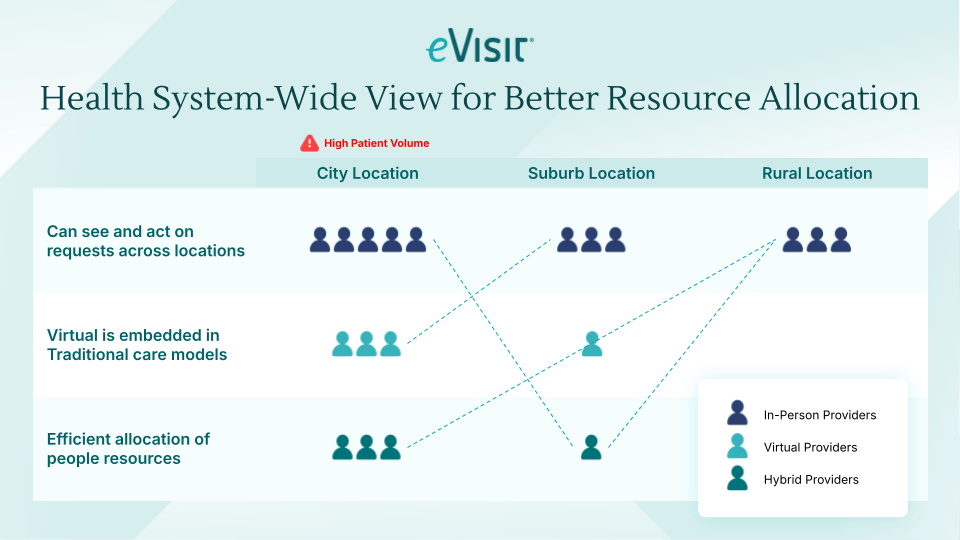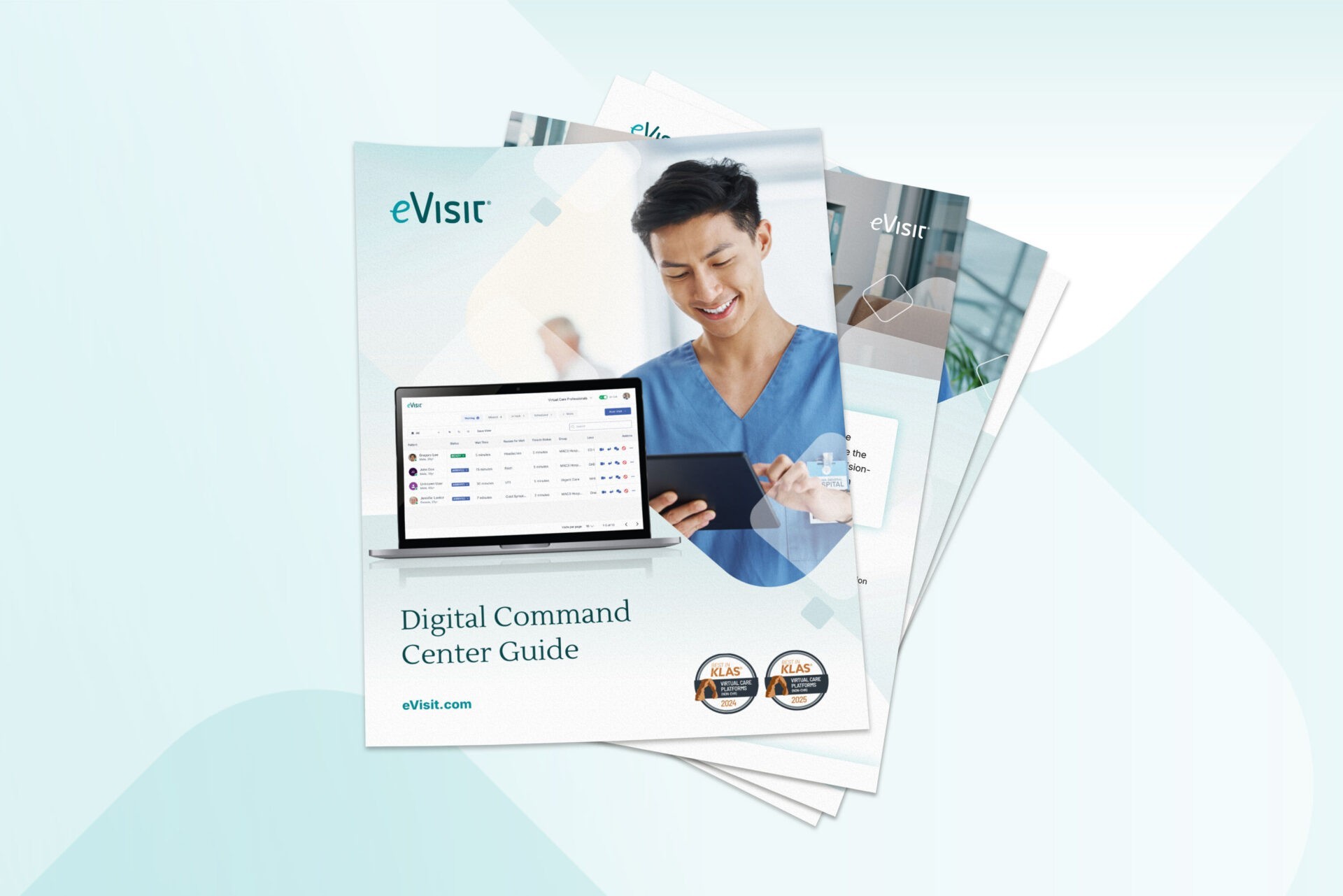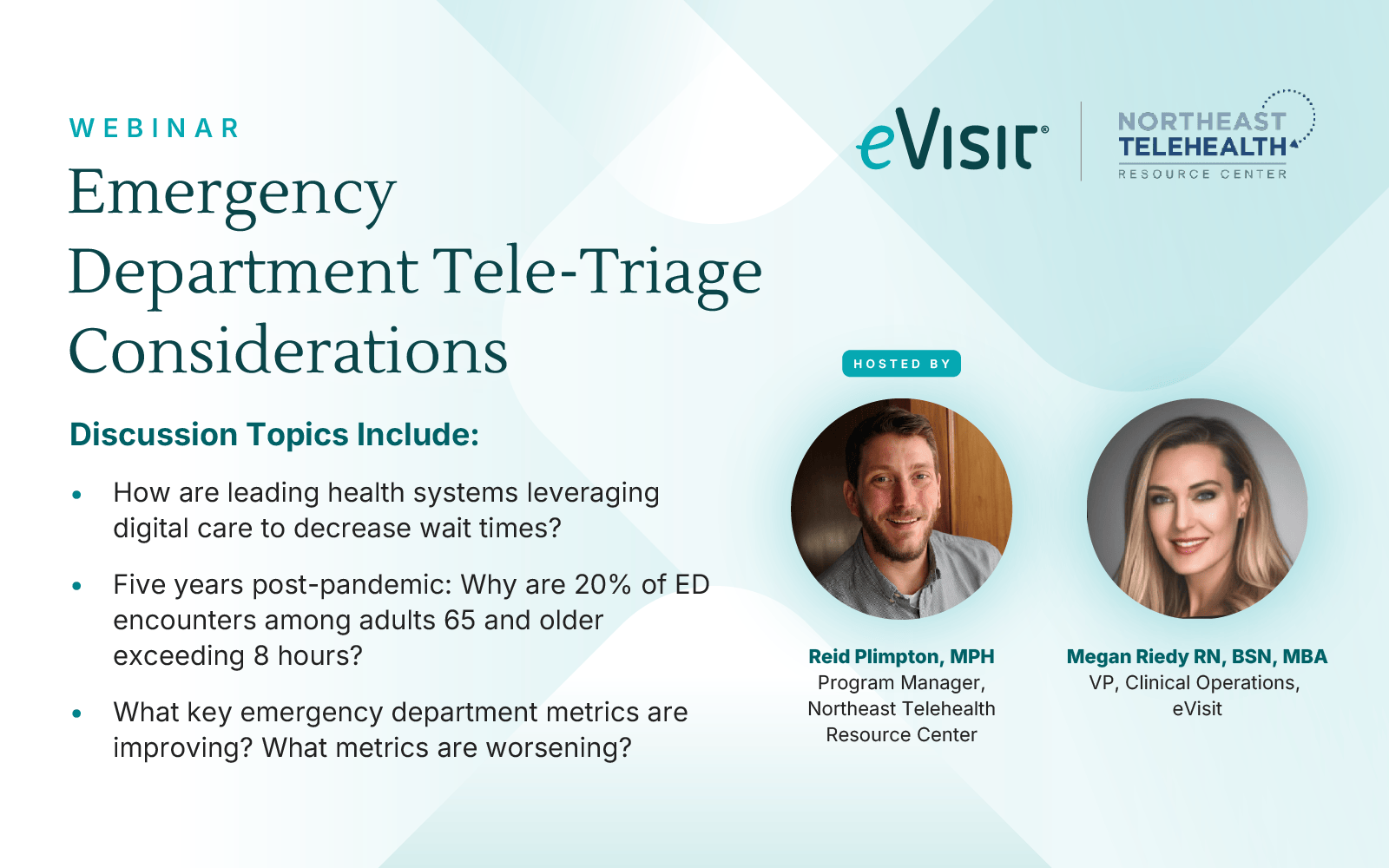
Health System-Wide View for Better Resource Allocation

Let’s take a look at a common health system challenge: limited staff. Paired with an uneven distribution of patient demand across locations.
At the city location, the Emergency Department is at capacity. Large number of patients waiting to be seen. Many of these queued patients, who are often low acuity, will go seek services elsewhere if wait times are too long.
By better allocating resources, a health system can connect low-acuity patients to other physicians across its enterprise. In many scenarios, rural providers can help alleviate overcrowding in city hospitals by providing ED-teletriage. Or the reverse, a stroke specialist in the city quickly connecting to a rural emergency department, delivering fast, critical care.
A health system could even have a true bunkered model where virtual providers can solely focus on managing various locations.
All existing providers can use these digital care tools to manage patients, no matter their physical location. This allows a more efficient use of resources based on patient demand and a streamlined triage process for patients. Ultimately, the combination of these strategies reduces the left without being seen rate and keeps patients within the health system.
Curious to learn how eVisit acts as the orchestration layer for healthcare delivery systems, streamlining data across various access points and responding to operational events in real time? Learn more about our Digital Command Center here.




